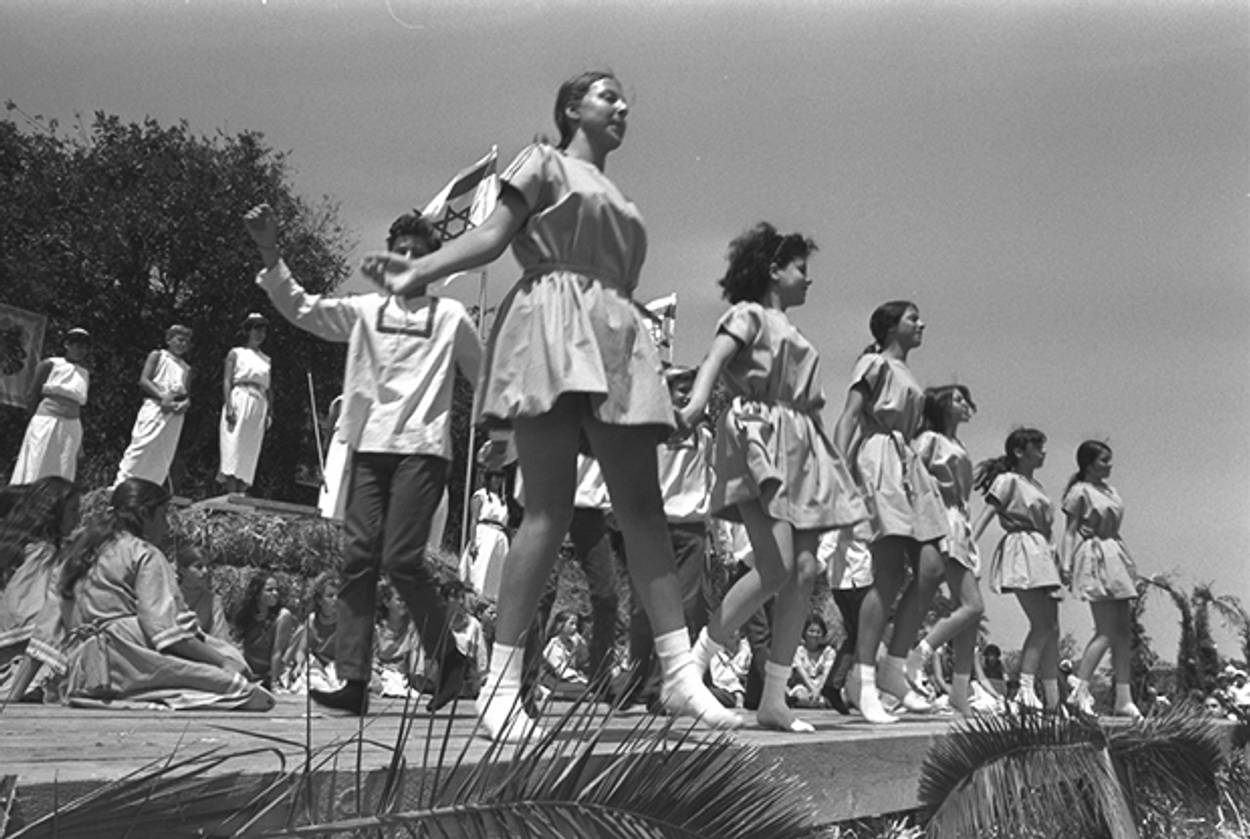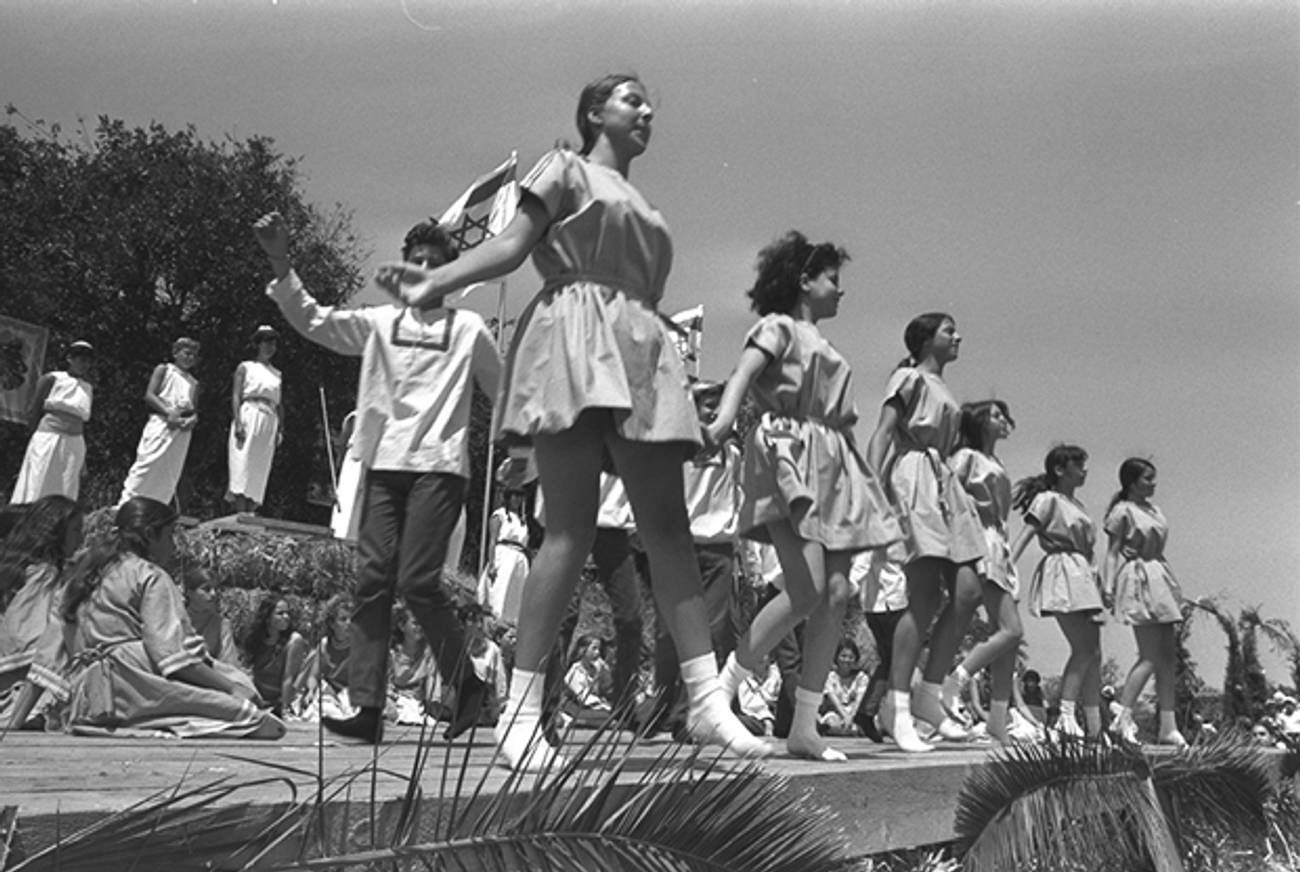Field Study: Why Shavuot is All But Ignored Across America
The holiday is a favorite among scholars, but is it too abstract to become popular among all but the most engaged or observant Jews?




When it comes to theological significance, the late-spring festival of Shavuot is no slouch: The event it commemorates—God giving the Torah to the Jews at Mount Sinai—is arguably the most pivotal in the narrative of the Jewish people. But from the treatment it receives next to its more popular siblings—at least within non-Orthodox American communities—you wouldn’t know it. Passover gets celebrated at the White House and inspires novels, Yom Kippur turned Sandy Koufax into an American Jewish hero, and Hanukkah is so visible that conservative talk radio hosts think it threatens Christmas. Shavuot, meanwhile, can’t even satisfy Tom Lehrer, who “spent Shavuos, in East St. Louis/A charming spot but clearly not the spot for me.”
“When you ask people what’s their favorite holiday, I’ve heard people say Passover, Hanukkah, Sukkot, Purim,” says Jonathan Sarna, who teaches American Jewish history at Brandeis University. “I think it’s harder for people to find an emotional attachment to Shavuot than to almost any other Jewish holiday.” According to Sarna and other historians, Shavuot’s trouble catching on is nothing new—it goes back, they say, to the fall of the Second Temple in the year 70 C.E.
In its earliest incarnation, Shavuot marked a pilgrimage to Jerusalem for the sacrifice of the harvest’s first fruits and is one of a historical trio of harvest celebrations, along with Sukkot and Passover, known as the shalosh regalim. According to Paul Steinberg, a rabbi at the Conservative synagogue Valley Beth Shalom in Los Angeles and the author of a series of books on the Jewish holidays, rabbis in the Talmudic period needed to reinvent Shavuot after the Jews left Israel for the Diaspora and no longer traveled to Jerusalem with harvest offerings. So, through what Steinberg calls the use of “complicated mathematical formulas” that were debated for centuries, the sages associated Shavuot with the giving of the Torah. But that interpretive shift, says Steinberg, has not “captured the imagination of Jews in America or anywhere else.” (According to Reform rabbi Andy Bachman, who leads Brooklyn’s Congregation Beth Elohim, some early Zionist settlers went so far as to explicitly reject the rabbinic interpretation of the holiday in favor of the agricultural one and celebrated Shavuot by dancing in the fields and riding on tractors.)
In the United States, Shavuot has met with particularly bad fortune. “They used to say that Jewish holidays needed mazel,” or luck, Sarna says. Hanukkah and Passover—located next to major Christian holidays that Jews want an alternative to—have mazel. Shavuot, marooned in the long stretch between Passover and the High Holidays, has the opposite. “Passover is the last Jewish gesture of the year before you disappear into summer camp, Memorial Day, et cetera,” Bachman says.
Until recently, Shavuot’s overlap with the end of the school year actually did confer some mazel at many Reform and Conservative synagogues, because Confirmation ceremonies—celebrations for high school students who have continued their Jewish education in addition to or instead of bar and bat mitzvahs—have traditionally been held on the holiday. But many congregations, including Bachman’s and Steinberg’s, have recently dropped Confirmation, which is increasingly seen an accommodation to Protestantism without authentic Jewish roots—another inadvertent blow to Shavuot.
Beyond the bad mazel, though, some conjecture that Shavuot may simply be too abstract to become popular among all but the most engaged or observant Jews. “The holidays that have done really well here are either firmly grounded in the home or allow for a kind of interplay between the synagogue and the home,” says Jenna Weissman Joselit, who teaches American Jewish history at George Washington University. Home-based holidays have strong elements of material and ritual—seders for Passover, sukkahs for Sukkot, menorahs for Hanukkah. But on Shavuot, “there’s no stuff and nothing to do, if you don’t go to shul,” Joselit says. “It’s a very serious holiday about law and responsibility and duty.” (All of this might be said as well for the High Holidays, which of course don’t lack for attendance. But the High Holidays make these themes personal, while Shavuot applies them to the Jews as a people—which, Joselit argues, makes them feel more remote.)
Shavuot is the consummate rabbis’ holiday: Its difficult themes of revelation, law, and collective responsibility make it a favorite among scholars—who struggle with how to share their enthusiasm with the laity. Elliot Dorff, a rabbi and professor of theology at American Jewish University in Los Angeles, calls it “my holiday”—precisely for the reasons their congregants may not. And Sarna says, “Shavuot is the holiday of books—it’s a harder sell, but we’re the People of the Book. Maybe it is our most authentic and distinctive holiday in that way.”
This idea might be starting to catch on: In the past few years, some synagogues have begun holding a tikkun leil Shavuot, or all-night study session, to celebrate the holiday. In its original form, the tikkun, first practiced in the 16th century by kabbalists who were themselves trying to revitalize Shavuot, involved prayer and Torah study from dusk until dawn; non-Orthodox congregations that hold the celebration now usually substitute lectures and roundtable discussions on a variety of subjects. Dorff said that Temple Beth Am, the Conservative synagogue he attends, can pull in 500 people for its tikkun (this year themed around “ethical, spiritual, halakhic implications of our food choices”), with 100 still remaining when the sun rises.
But some question whether the tikkun will ever catch on at most synagogues in a way that even approximates the success of lighter, more family-oriented holiday celebrations. “God bless Elliot Dorff, but Beth Am has a lot of academics and rabbis,” Steinberg said when asked whether he thought all-night study could save Shavuot. “That’s not the case for most synagogues. Most synagogues you get people till 10:00, then it dwindles.” (Indeed, some Jewish communities—in New York, California, and elsewhere—are trying to make the tikkun a more popular destination with performances, film screenings, and Israeli dancing.)
Steinberg’s own congregation is trying a different approach this year: bringing in a cow. Children at the synagogue will have an opportunity to watch a milking demonstration and churn their own butter in conjunction with the tradition of eating dairy on Shavuot. “We’ll see how it goes,” Steinberg says wryly. “It’s an intervention, if you will.”
Ari M. Brostoff is Culture Editor at Jewish Currents.